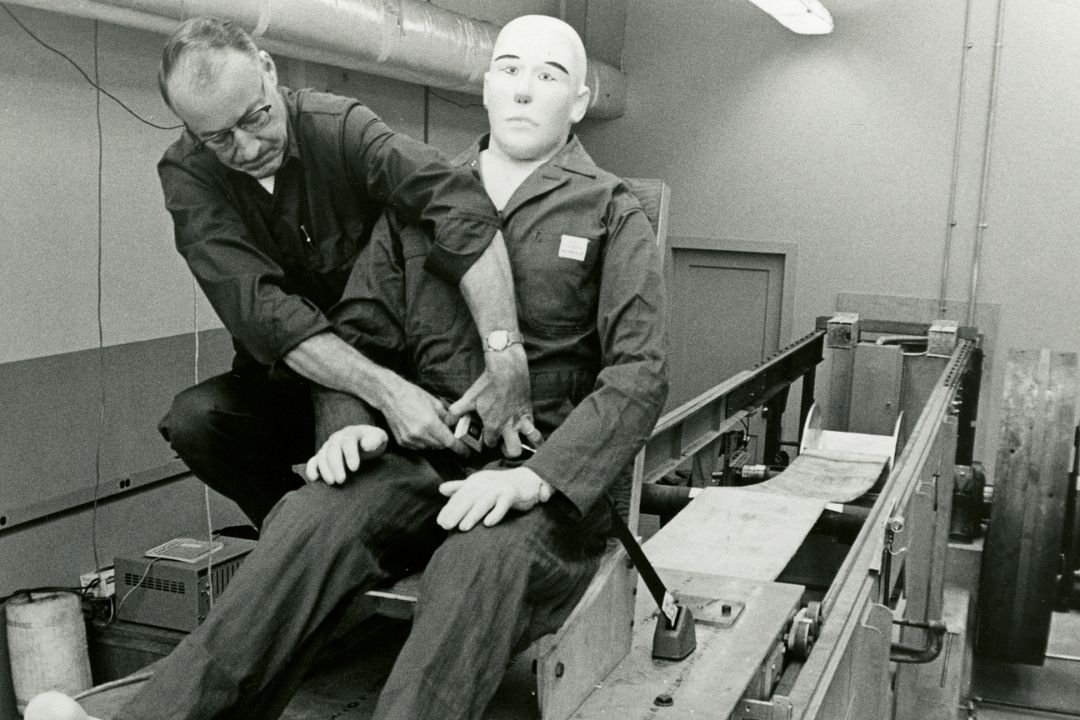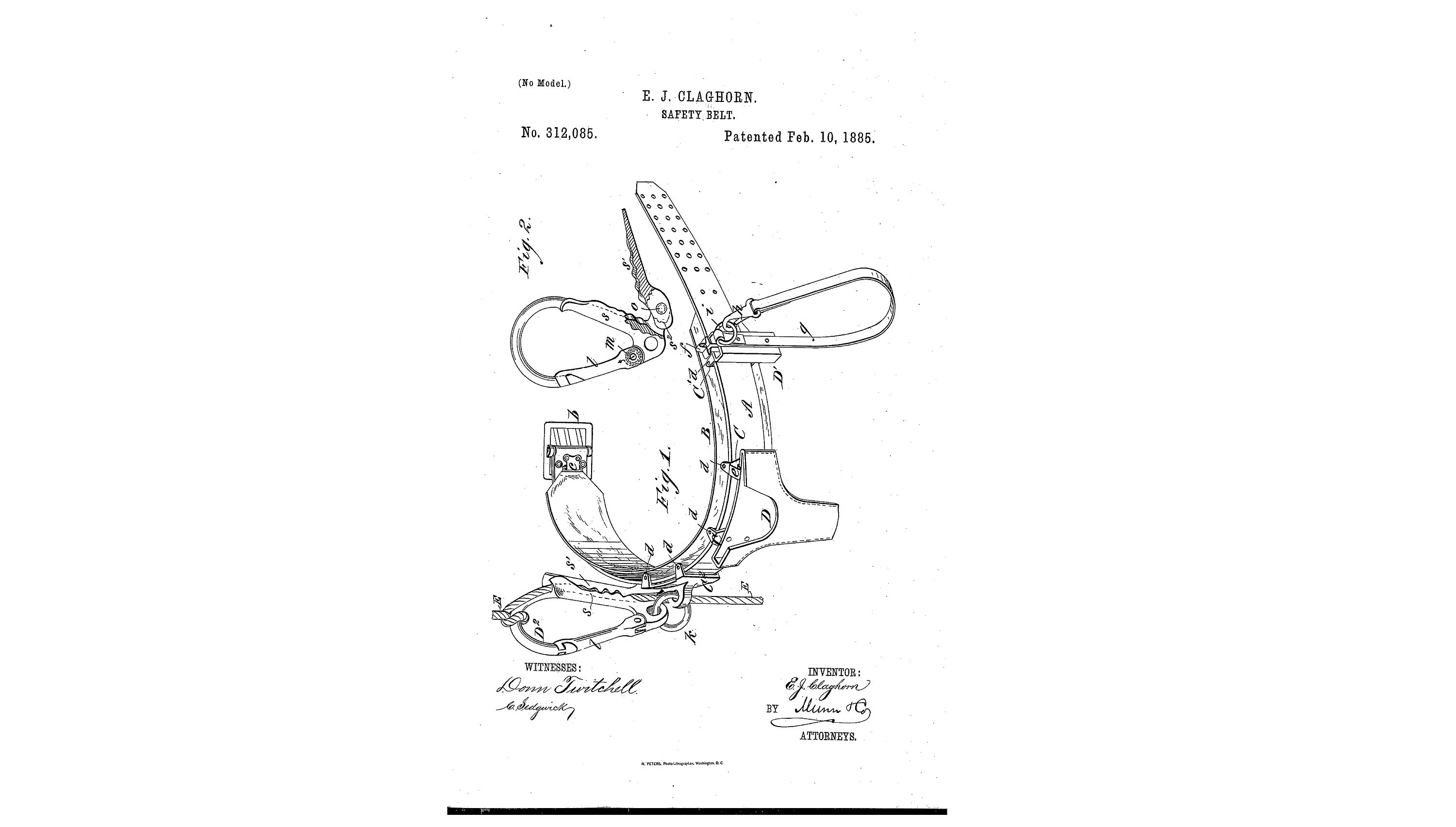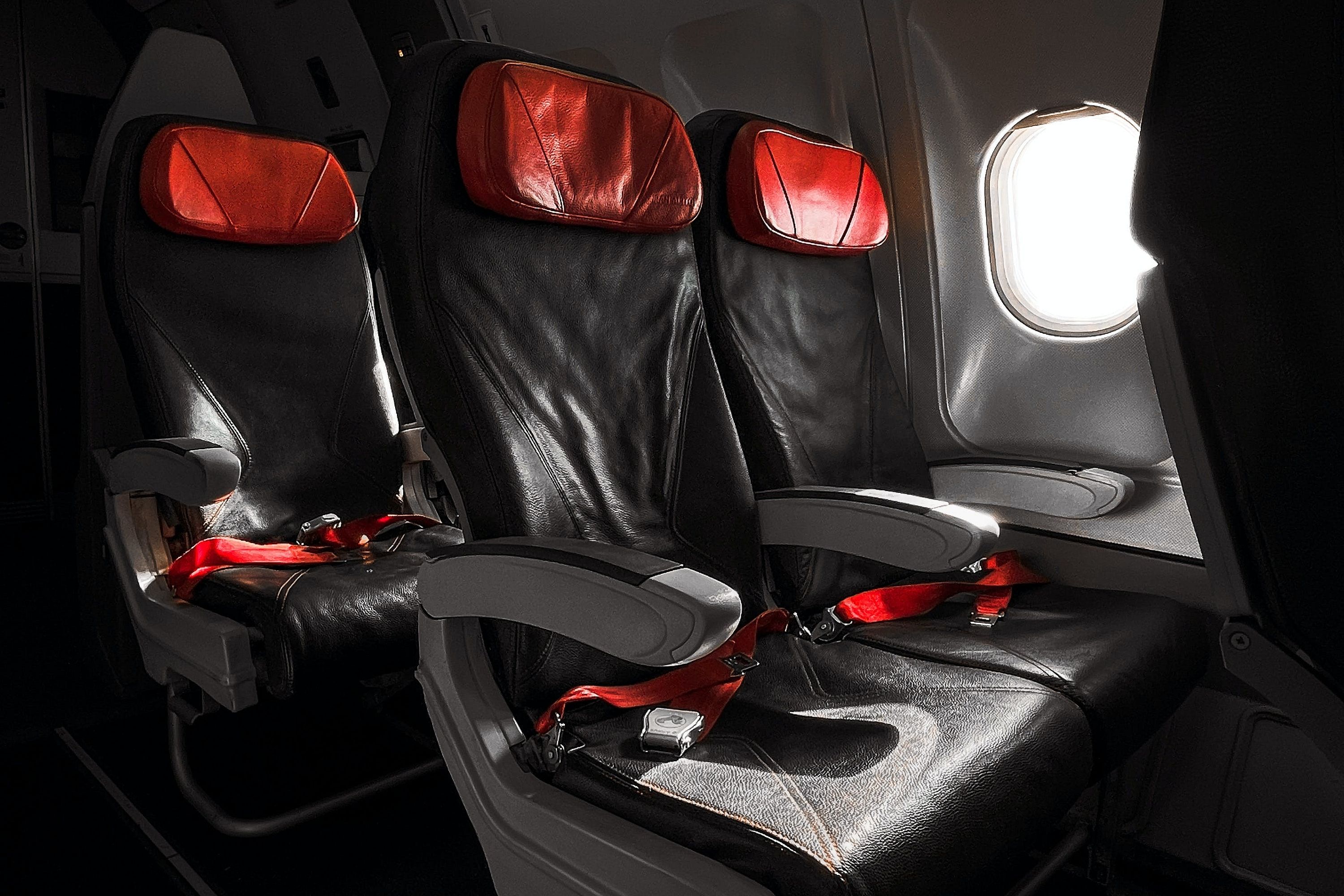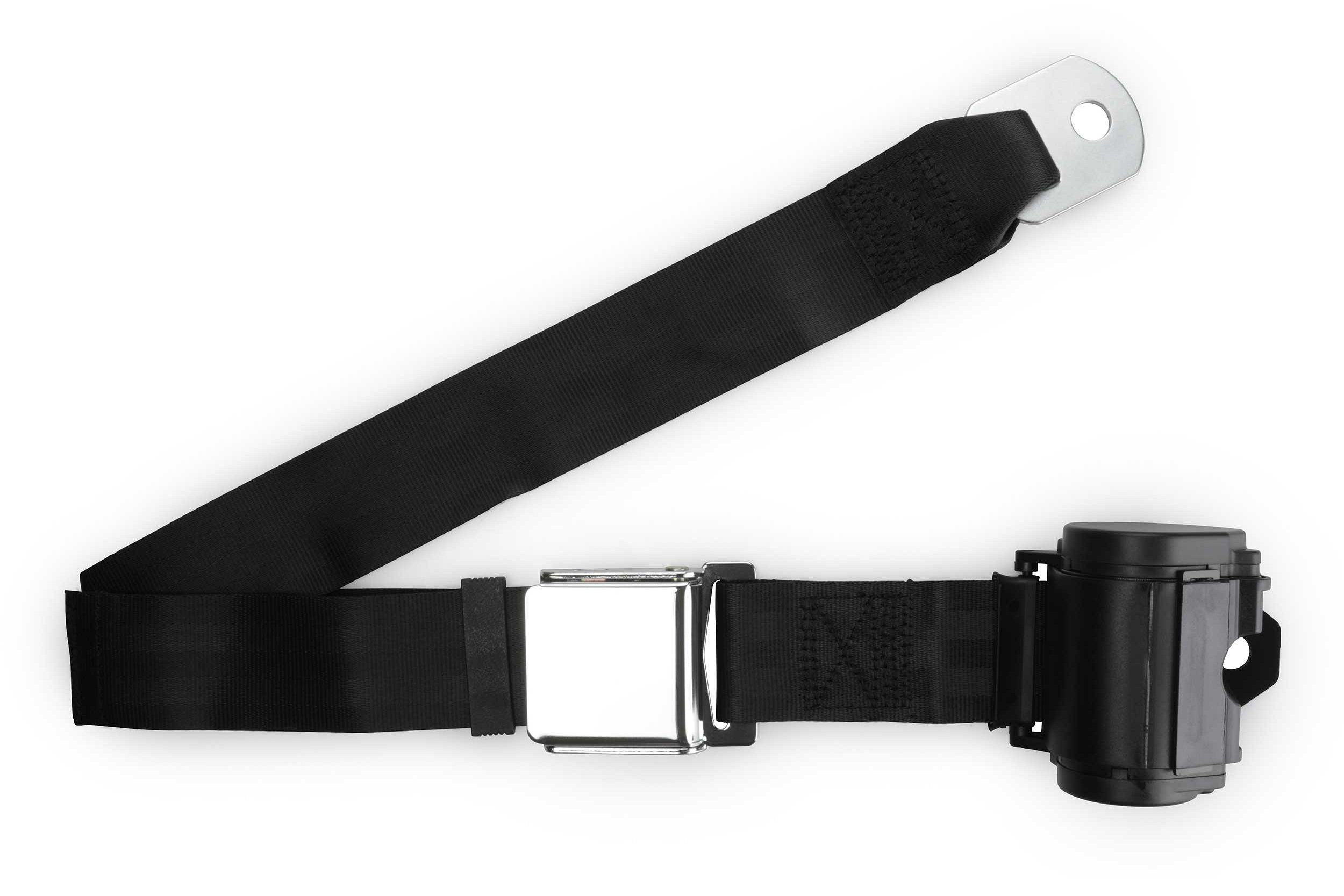Love them or hate them, seat belts are an indispensable and essential safety feature in modern vehicles. These simple yet effective restraints have saved countless lives and prevented numerous injuries. Yet, this essential safety feature, now found in every vehicle, wasn't always a given. Laws requiring seat belt fitment fitted to vehicles and enforcing the wearing of seat belts by vehicle occupants are relatively new requirements in automotive history.
But when were seat belts invented, and who can be credited with this life-saving innovation?
The invention of seat belts can be attributed to the combined efforts of several individuals, culminating in the groundbreaking designs of Dr. C. Hunter Shelden and Nils Bohlin. Today, seat belts are considered a fundamental component of vehicle safety, found in everything from the Mitsubishi Mirage to the Bugatti Chiron, highlighting the importance of occupant protection as the cornerstone of vehicle safety. So let's dive into the progression of seat belts from an idea to essential life-saving equipment in all modern vehicles.
When Were Seat Belts Invented?
Seat belts can be traced back to the brilliant minds and early innovations of engineers and inventors, but the exact date of creation depends on what type of seat belt you're asking about, as rudimentary safety harnesses were a concept long before the seatbelt as we know it today was finalized.
First Ideas: The Early Concept
The concept of the seat belt first emerged in the 19th century, a time of burgeoning innovation but minimal concern for passenger safety in transport. The visionary behind the first concept of a safety harness was Sir George Cayley, an English engineer better known for his pioneering work in aerodynamics and early aviation.
Cayley's concept wasn't initially for cars but for aircraft; he recognized the inherent risks in flying and the need to secure both pilot and passengers. Cayley's design was simple: straps to hold a person in place, preventing injury during sudden movements or impacts.
It might seem basic today, but in Cayley's time, it was revolutionary and was the first step in the seat belt as we know it today.
The First Seat Belt Patent
Transitioning from the visionary ideas of George Cayley, the first seat belt patent was filed by Edward J. Claghorn on February 10, 1885.
Patent No. 312,085 was designed for tourists in New York City to secure them in horse-drawn cabs and keep them safe from the rough and tumble of 19th-century street transportation; the device consisted of a series of straps, hooks, and buckles, and was officially titled the "safety belt." It was a basic safety harness that was also earmarked for use by painters, farmers, firemen, and telegraphmen, securely fasting them to a pole or truck and allowing their hands to be free to work.
This patent represented the first legal recognition of the need for a device to enhance passenger safety. While Claghorn's design was far from the seat belts we know today, it was a vital step forward. It showed a growing awareness of the dangers of transportation and the need to address them. Claghorn's patent laid the groundwork for future innovations, paving the way for the seat belts that would become a crucial part of automotive safety.
The Evolution of Seat Belts
From the early 20th century's rudimentary designs to today's advanced systems, seat belts have undergone a transformation that mirrors the evolution of the automobile itself.
In the early days, seat belts were simple straps, more symbolic than functional, and intended to keep passengers in the vehicle in difficult driving conditions rather than protecting them during accidents. However, the need for effective restraint systems became glaringly apparent as cars became faster and accidents more frequent.
Lap Belts
First appearing in aircraft and race cars, lap belts were simple, two-point straps. They were designed to keep the person in place during rapid movements.
Initially, there was little public interest or demand for seat belts in everyday vehicles. Car manufacturers didn't prioritize seat belts, viewing them as optional extras rather than essential safety features.
The 1930s and 1940s witnessed a gradual shift as medical professionals and safety advocates highlighted road accident risks. This period saw an increased understanding of the need for better restraints to protect drivers and passengers.
By the 1950s, some car manufacturers started introducing simple lap belts in their models, the same as what you might find on modern aircraft.
Retractable Seat Belts
Dr. C. Hunter Shelden made a groundbreaking contribution to seat belt design when his work in the 1950s led to the development of the retractable seat belt.
Before Dr. Shelden's innovation, seat belts were often cumbersome and uncomfortable for passengers. They were typically fixed in place, making it challenging for individuals to adjust them to their preferred fit. This discomfort and inconvenience often discouraged people from wearing seat belts.
The retractable belt's mechanism allowed it to shorten or lengthen to accommodate passengers of varying sizes, aiding comfort and optimal safety.
Patented in 1955, it made seat belts user-friendly and paved the way for other seatbelt technology like pre-tensioners.
Three-Point Seat Belts - The Current Standard
Nils Bohlin, an engineer at Volvo, revolutionized safety belts when he designed the modern three-point seatbelt in 1959.
Before joining Volvo, Bohlin had experience working on aircraft ejection seats, where safety and quick-release mechanisms were critical, fueling the invention of the three-point belt.
This design, known as the "Bohlin belt," incorporated three key elements: a lap belt over the pelvis, a diagonal belt across the chest, and a central buckle. Combining these elements provided comprehensive restraint for both the upper and lower body, effectively preventing passengers from being thrown forward or sideways during a collision.
Volvo recognized the groundbreaking nature of Bohlin's invention and swiftly implemented the three-point seat belt, with the 1959 Volvo PV544 becoming the world's first car to feature the three-point belt. In a remarkable act of altruism, they opened the patent for the three-point seat belt to the world free of charge.
Regulatory Adoption and Seat Belt Laws
Once the benefits of a seat belt, particularly the three-point belt, were made clear, governments, safety agencies, and automakers quickly adopted standards to make road travel safer.
- Mandatory Usage Laws: The first step towards making seat belts ubiquitous was the introduction of mandatory usage laws, requiring drivers and passengers to use seat belts whenever a vehicle was in motion.
- Legislation by Country: Seat belt laws were introduced at different times in various countries. For example, in the United States, the first seat belt law was enacted in New York in 1984, making front seat belt use mandatory. Over time, these laws expanded to include rear-seat passengers.
- Global Standardization: Efforts were made to standardize seat belt laws globally. Organizations like the United Nations and the World Health Organization played crucial roles in promoting consistent seat belt legislation and usage around the world.
It took a little time for the motoring public to accept the idea of seat belts, but a combination of "seat belts save lives" campaigns and punishment for not wearing seat belts resulted in mass adoption.
Public Health Impact and Statistics
Since the introduction of seat belt laws, a significant decline in road traffic fatalities and severe injuries has been observed. In the United States alone, the National Highway Traffic Safety Administration (NHTSA) estimates that seat belts saved over 14,955 lives of people involved in motor accidents in the US in 2017 alone.
Studies have consistently shown that wearing seat belts significantly reduces the risk of injury in accidents. The simple act of buckling up can prevent occupants from being ejected from the vehicle, reduce the force of impact, and protect vital organs. Statistics also highlight the importance of seat belts for different age groups. Seat belt use is particularly effective in protecting children, especially when combined with age-appropriate booster seats.
Seat belts further help reduce the burden on healthcare systems by preventing injuries that require expensive medical treatments and long-term care. This not only saves lives but also reduces healthcare costs.
Different Types of Seat Belts
Seat belts have come a long way from their origins as basic straps. Today, they are available in various forms, each tailored to specific safety needs and passenger profiles. While various specialty belts exist, the most common types you're likely to find in cars are:
- Lap Belts: Often called two-point seat belts, these were the most common type installed in earlier model cars. They consist of only a lap belt fastened across the pelvis.
- Three-Point Seat Belts: The three-point seat belt incorporates a lap belt and a diagonal belt that form a "Y" shape over the chest and pelvis. This design offers superior restraint and is considered the standard in modern vehicles.
- Racing Harnesses: Available in four-, five-, and six-point versions, these are used in racing applications and typically comprise two shoulder straps and two lap straps joining in a central buckle. In five- and six-point harnesses, one or two crotch straps are also added for extra security.
The Role of Seat Belts in Passenger Safety
The role of seat belts in passenger safety cannot be overstated, working with other safety systems like airbags and collapsible steering columns and pedal boxes to mitigate injuries and prevent death. The key ways they do this are:
- Restraint: Seat belts serve as primary restraints, keeping occupants securely in their seats during sudden stops or collisions. They prevent passengers from being ejected from the vehicle, a significant risk in accidents.
- Reducing Collision Forces: In the event of a crash, seat belts distribute the force of impact across the stronger parts of the body - the pelvis and chest. This reduces the risk of severe injuries to vital organs and bones.
- Complementing Airbags: Seat belts work with airbags to provide comprehensive protection. Airbags cushion the impact, while seat belts keep occupants in the correct position for airbags to be most effective.
- Mitigating Secondary Collisions: In multiple-impact accidents, seat belts help passengers remain in a stable position, reducing the risk of injury from subsequent collisions.
Technological Advancements in Seat Belt Design
Seat belts have undergone a remarkable transformation over the years, and the latest technological advancements are driving their evolution even further.
- Smart Seat Belts: Modern vehicles are increasingly equipped with smart seat belts that go beyond passive restraint. These seat belts use sensors to detect factors like seat occupancy, passenger size, and even heart rate. They can adjust the tension and position of the belt accordingly to provide optimal restraint and comfort.
- Pre-Tensioning Seat Belts: One of the latest innovations is self-tightening seat belts. These belts automatically adjust their tension during sudden stops or collisions, ensuring that occupants remain securely restrained even in dynamic situations. Try getting air in a Volvo S90 or modern Mercedes and feel as the seatbelt embraces you in a momentary death grip.
- Airbag-Integrated Seat Belts: Some vehicles are now incorporating airbags into safety belts, which deploy during a collision to provide additional protection to the chest and upper body.
- Buckleless Seat Belts: Researchers are exploring buckleless seat belts that use magnets or other fastening mechanisms instead of traditional buckles. These designs aim to simplify securing a seat belt while maintaining safety.
- Climate-Controlled Seatbelts: Seat belts are being designed with added padding, ergonomic shapes, and temperature control features to make them more comfortable for extended periods of use.
-
Biometric Feedback: Seat belts may incorporate biometric sensors to monitor the health and well-being of occupants. These sensors could detect medical emergencies and alert emergency services, potentially saving lives.








